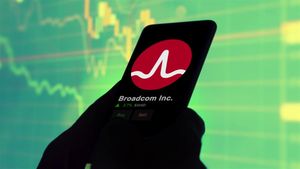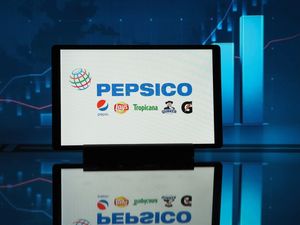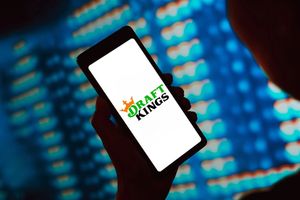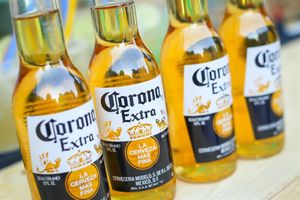The "United States Narcolepsy Drugs Market to Reach US$ 2,233.56 Million by 2033 - 7.88% CAGR Driven by Novel Therapies and Better Diagnosis" report has been added to ResearchAndMarkets.com's offering.
The United States Narcolepsy Drugs Market is expected to reach US$ 2.23 billion by 2033 from US$ 1.12 billion in 2024, with a CAGR of 7.88% from 2025 to 2033. The market is expanding mainly due to the growing prevalence of sleep disorders, improved knowledge and diagnosis of narcolepsy, continuous improvements in medication development, and a supportive regulatory environment.
United States Narcolepsy Drugs Market Overview
The market for narcolepsy medications in the US is expanding steadily due to rising awareness, better diagnostic rates, and continuous developments in treatments for sleep disorders. Between 135,000 and 200,000 Americans suffer from narcolepsy, a chronic neurological disorder that affects the brain's ability to control sleep-wake cycles.
A growing need for efficient symptom management is driving the market, and drugs like pitolisant, sodium oxybate, armodafinil, and modafinil are essential. In order to improve treatment compliance and efficacy, the U.S. Food and Drug Administration (FDA) keeps approving new formulations and extended-release medications. Clinical trial enrollment and public awareness of the illness have also improved as a result of greater research funding and patient activism.
In many areas, the prevalence of sleep disorders, including narcolepsy, is generally rising. For example, a Narcolepsy Network article states that approximately one in every 2,000 Americans suffers from narcolepsy. This amounts to about 200,000 Americans and approximately 3 million people worldwide.
A growing number of sleep problems are caused by lifestyle variables such as increasing stress, inconsistent sleep habits, and the rise in late-night technology use. The need for narcolepsy treatments is growing as more people look for solutions to their sleep problems. In the upcoming years, these factors are anticipated to drive the expansion of the narcolepsy medication market.
Leading pharmaceutical firms leading the way in product research and commercialization include Harmony Biosciences, Avadel Pharmaceuticals, and Jazz Pharmaceuticals. Particularly for the treatment of cataplexy and excessive daytime sleepiness, Jazz's Xyrem and Xywav continue to lead the market.
However, the introduction of novel therapies and generic competition are changing the market dynamics. By providing more convenient dosing and fewer side effects, the introduction of once-nightly sodium oxybate and orexin receptor agonists has the potential to completely change therapy paradigms.
High medication costs and restricted access to specialists continue to be major obstacles in spite of these developments. However, with robust regulatory support and an increasing emphasis on enhancing the quality of life for narcolepsy patients, the U.S. narcolepsy medication market is well-positioned for further innovation.
Key Factors Driving the United States Narcolepsy Drugs Market Growth
Enhanced Awareness and Diagnosis
- Early detection and precise diagnosis of narcolepsy have been greatly aided by the past ten years' increase in clinical and public awareness of the disorder.
- Broader media coverage and educational campaigns spearheaded by patient advocacy organizations like the Narcolepsy Network have contributed to a decrease in stigma and a greater awareness of the symptoms of narcolepsy, including excessive daytime sleepiness and cataplexy.
- The time between symptom onset and diagnosis has decreased as a result of improved training for clinicians to identify the signs. Patient outcomes and quality of life are enhanced by earlier diagnosis, which enables more prompt management.
- More people are seeking medical attention as a result of this increased knowledge, which is fueling the need for efficient treatment choices in the US.
Developments in Diagnostic Tools
- The precision of narcolepsy diagnosis has increased due to technological developments in sleep medicine.
- Nowadays, sleep clinics all across the United States have access to tools like polysomnography (PSG) and the Multiple Sleep Latency Test (MSLT), which allow clinicians to quantify sleep patterns, REM onset, and sleep latency - all important markers of narcolepsy - objectively.
- These tests are assisting medical professionals in differentiating narcolepsy from other sleep disorders such as insomnia or sleep apnea, in conjunction with enhanced clinical guidelines and diagnostic criteria.
- As a result, more patients are getting the right care, and misdiagnosis rates have dropped.
- In addition to expediting the patient journey, improved diagnostic capabilities are driving market expansion by increasing the number of diagnosed patients in need of medication.
Launch of Novel Therapies
- The launch of novel therapies that cater to unmet clinical needs is drastically altering the market for narcolepsy medications in the United States.
- These days, novel medicines like once-nightly sodium oxybate and non-scheduled drugs like pitolisant are replacing or supplementing traditional stimulants and older formulations like twice-nightly sodium oxybate.
- These new medications provide better long-term adherence, fewer side effects, and more convenient dosage.
- Furthermore, there is promise for even more individualized treatment in the near future thanks to the development of orexin receptor agonists and other targeted medicines.
- In addition to improving patients' quality of life, these developments set pharmaceutical products apart in a crowded market, promoting both clinical uptake and financial success.
Challenges in the United States Narcolepsy Drugs Market
Regulatory and Reimbursement Obstacles
- Although the FDA in the United States has taken action to encourage the development of orphan medications, such as those for uncommon ailments like narcolepsy, market access is still extremely difficult because of reimbursement obstacles.
- The cost of many narcolepsy treatments is considerable, including those based on sodium oxybate and more recent medications like pitolisant.
- Before granting coverage, insurance companies frequently demand a lot of paperwork, prior permission, or step therapy procedures, which delays patients' access to treatment.
- Both doctors and patients may become frustrated by these administrative obstacles, which may cause them to stop receiving therapy or avoid it entirely.
- Disparities in access are also brought about by variations in reimbursement practices between government programs and private insurers.
- Navigating reimbursement is a significant barrier to providing the best possible care, which is especially important in a market where prompt and ongoing therapy is necessary for symptom management and quality of life maintenance.
Stigma and Ignorance
- Despite advancements in public health education, the general public and even medical professionals continue to have a poor understanding of narcolepsy.
- Hallucinations, cataplexy, and excessive daytime sleepiness are some symptoms that are frequently confused with sadness, laziness, or other mental health conditions.
- Patients experience severe emotional distress and social humiliation as a result of this misperception.
- Furthermore, many primary care doctors are not familiar with the full clinical presentation of narcolepsy due to its rarity and complexity, which can result in incorrect diagnoses or delayed referrals to sleep specialists.
- Patients may experience significant effects on their education, careers, and interpersonal connections over the several years it takes on average to receive a diagnosis.
- This ignorance impacts research funding and policy attention in addition to impeding early detection and treatment.
- To improve outcomes for people with narcolepsy in the United States, it is imperative to address stigma and enhance clinical education.
Company Analysis: Overviews, Key Persons, Recent Developments, SWOT Analysis, Revenue Analysis
- Jazz Pharmaceuticals
- Ligand Pharmaceuticals
- Novartis AG
- Takeda Pharmaceutical
- Teva Pharmaceutical
- Hikma Pharmaceuticals Plc
- Harmony Biosciences Holdings
- Roche Holding AG
- Johnson & Johnson
Key Attributes:
| Report Attribute | Details |
| No. of Pages | 200 |
| Forecast Period | 2024 - 2033 |
| Estimated Market Value (USD) in 2024 | $1.12 Billion |
| Forecasted Market Value (USD) by 2033 | $2.23 Billion |
| Compound Annual Growth Rate | 7.8% |
| Regions Covered | United States |
Key Topics Covered:
1. Introduction
2. Research & Methodology
2.1 Data Source
2.1.1 Primary Sources
2.1.2 Secondary Sources
2.2 Research Approach
2.2.1 Top-Down Approach
2.2.2 Bottom-Up Approach
2.3 Forecast Projection Methodology
3. Executive Summary
4. Market Dynamics
4.1 Growth Drivers
4.2 Challenges
5. United States Narcolepsy Drugs Market
5.1 Historical Market Trends
5.2 Market Forecast
6. Market Share Analysis
6.1 By Disease Type
6.2 By Therapeutic Type
6.3 By End Users
6.4 By States
7. Disease Type
7.1 Daytime Extreme Sleepiness
7.2 Cataplexia
7.3 Other Disease Type
8. Therapeutic Type
8.1 Central Nervous Systems Stimulants
8.2 Tricyclic Antidepressants
8.3 Sodium Oxybate
8.4 Selective Serotonin Reuptake Inhibitor
8.5 Others
9. End Users
9.1 Diagnostics Centers
9.2 Hospitals
9.3 Others
10. Top 10 States
10.1 California
10.2 Texas
10.3 New York
10.4 Florida
10.5 Illinois
10.6 Pennsylvania
10.7 Ohio
10.8 Georgia
10.9 Washington
10.10 New Jersey
10.11 Rest of United States
11. Value Chain Analysis
12. Porter's Five Forces Analysis
12.1 Bargaining Power of Buyers
12.2 Bargaining Power of Suppliers
12.3 Degree of Competition
12.4 Threat of New Entrants
12.5 Threat of Substitutes
13. SWOT Analysis
13.1 Strength
13.2 Weakness
13.3 Opportunity
13.4 Threats
14. Pricing Benchmark Analysis
14.1 Jazz Pharmaceuticals
14.2 Ligand Pharmaceuticals
14.3 Novartis AG
14.4 Takeda Pharmaceutical
14.5 Teva Pharmaceutical
14.6 Hikma Pharmaceuticals Plc
14.7 Harmony Biosciences Holdings
14.8 Roche Holding AG
14.9 Johnson & Johnson
15. Key Players Analysis
For more information about this report visit https://www.researchandmarkets.com/r/phpu4s
About ResearchAndMarkets.com
ResearchAndMarkets.com is the world's leading source for international market research reports and market data. We provide you with the latest data on international and regional markets, key industries, the top companies, new products and the latest trends.
View source version on businesswire.com: https://www.businesswire.com/news/home/20250825535615/en/
Contacts
ResearchAndMarkets.com
Laura Wood, Senior Press Manager
press@researchandmarkets.com
For E.S.T Office Hours Call 1-917-300-0470
For U.S./ CAN Toll Free Call 1-800-526-8630
For GMT Office Hours Call +353-1-416-8900





